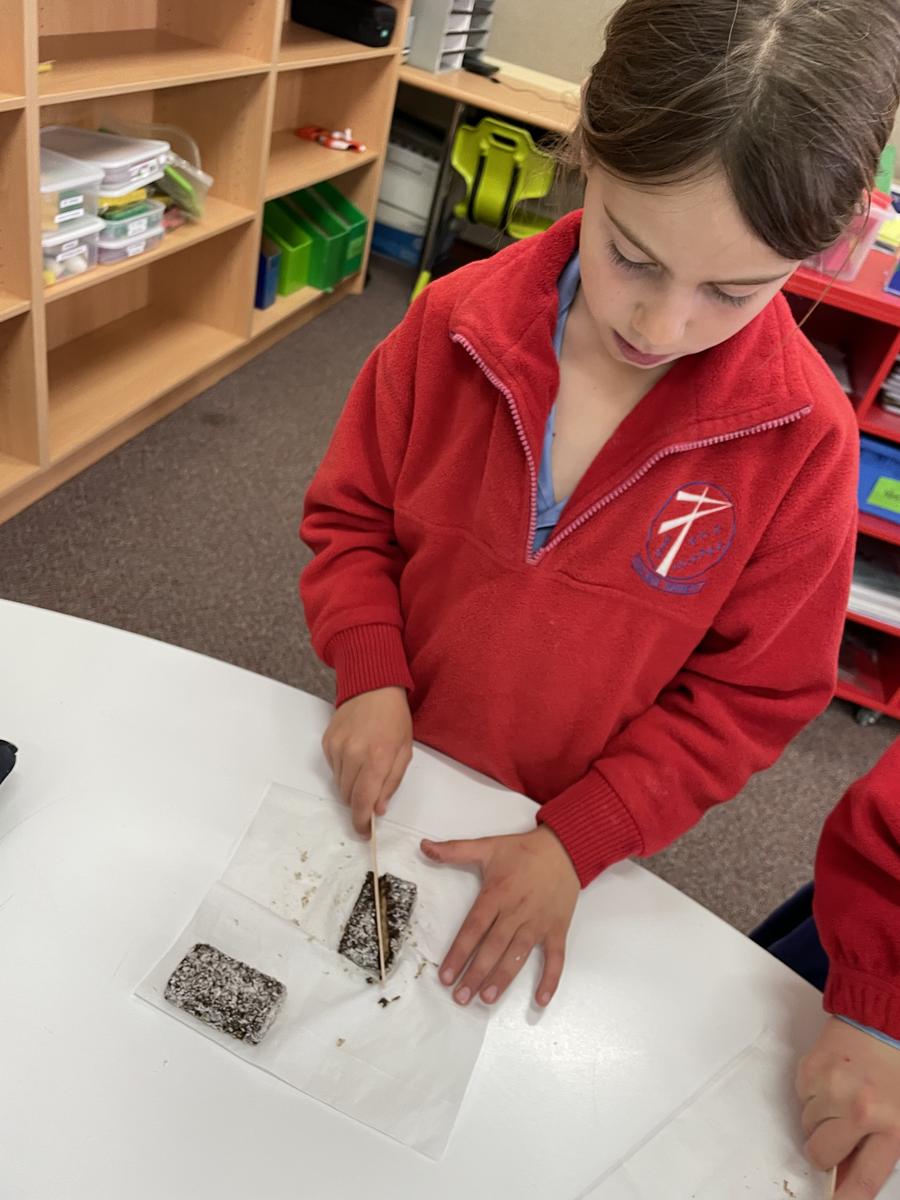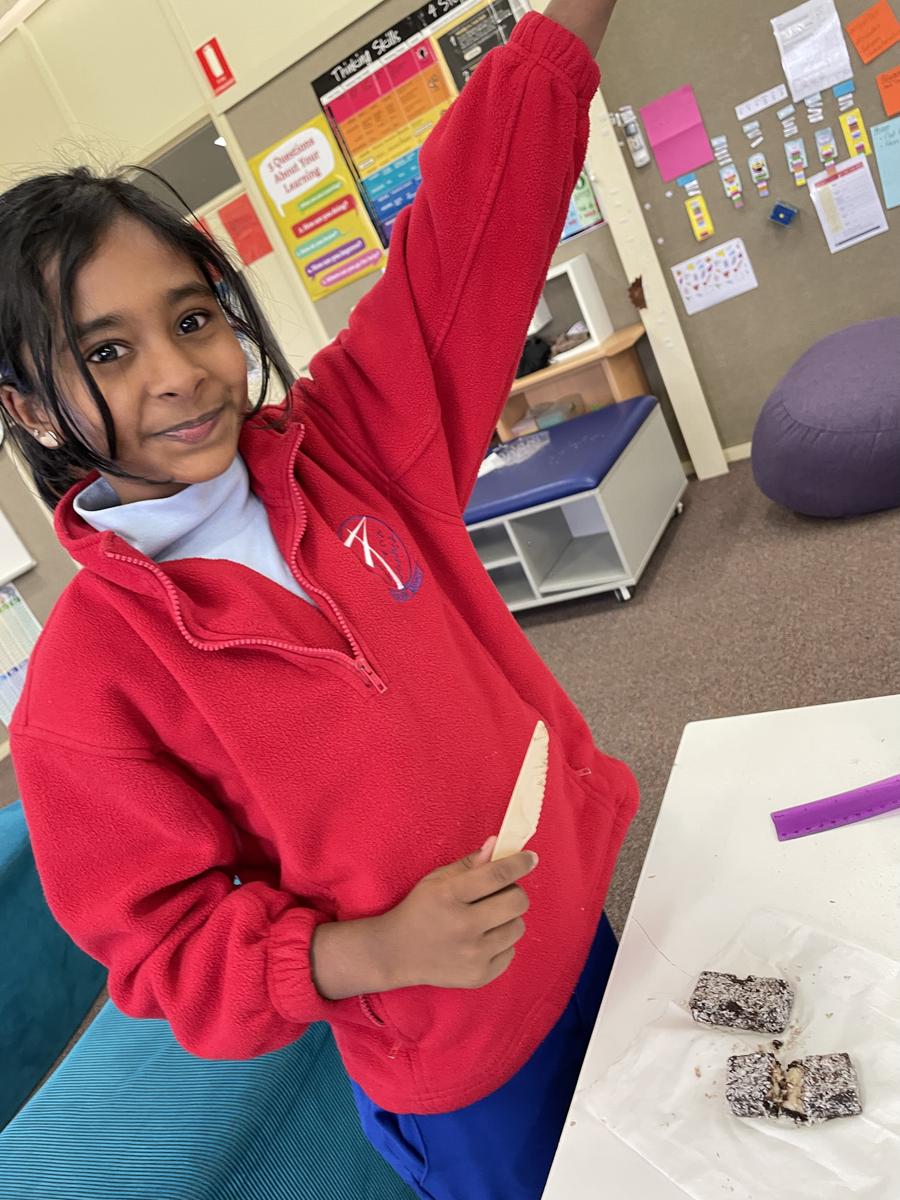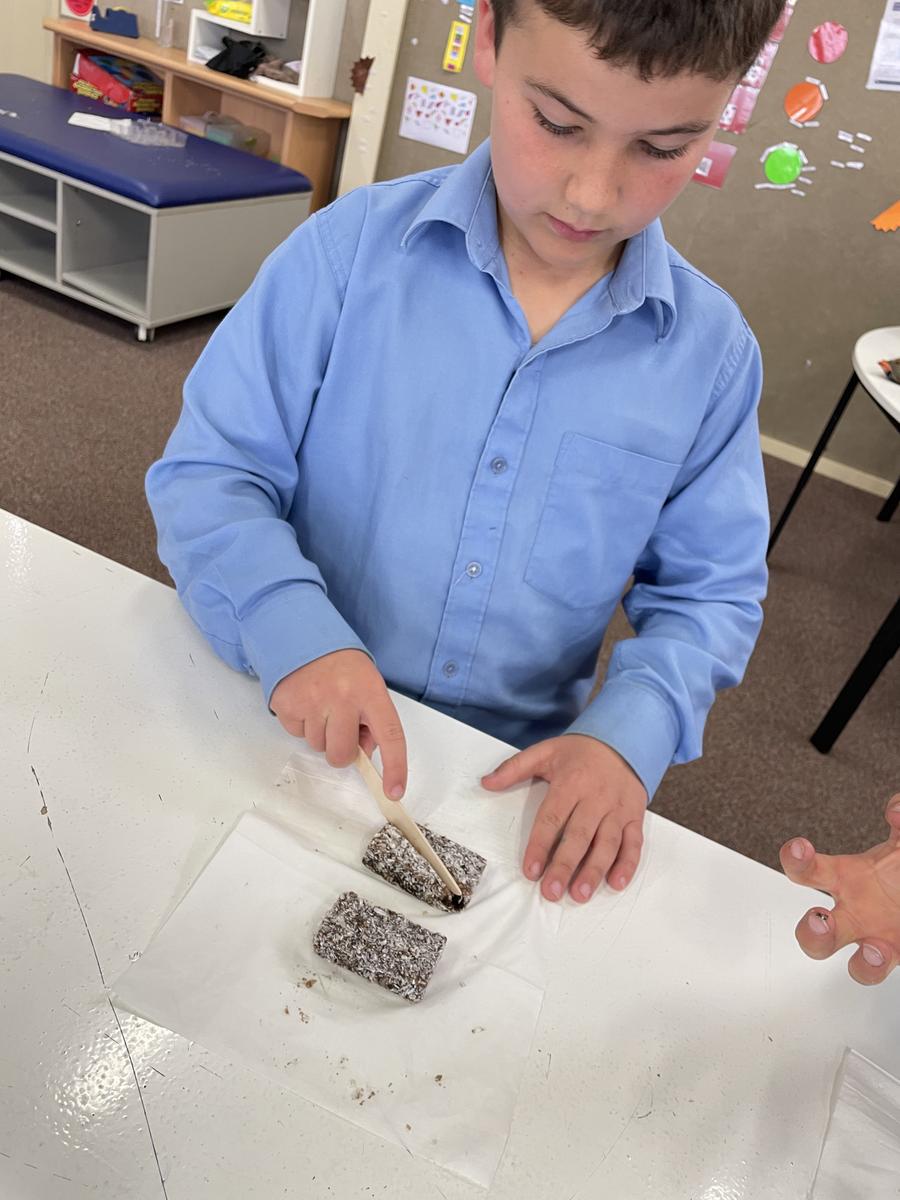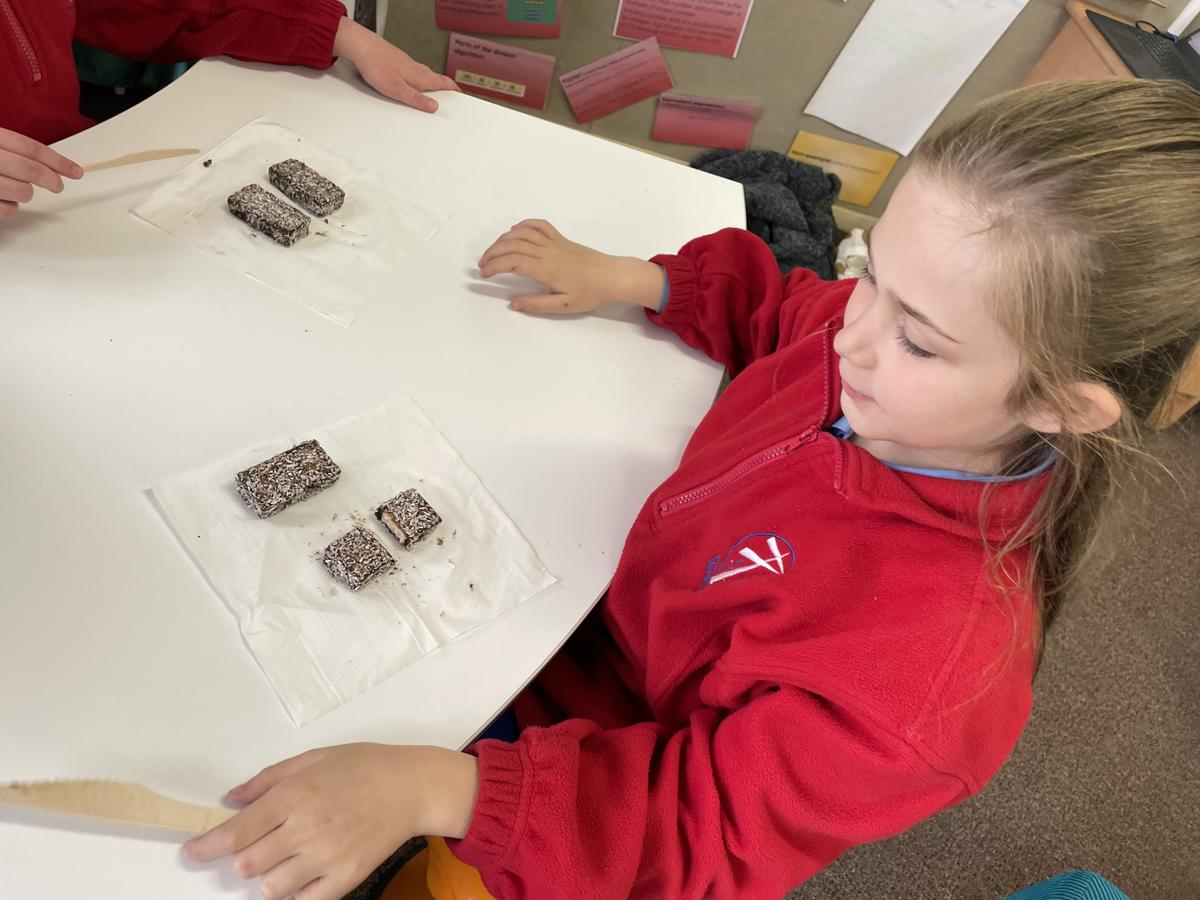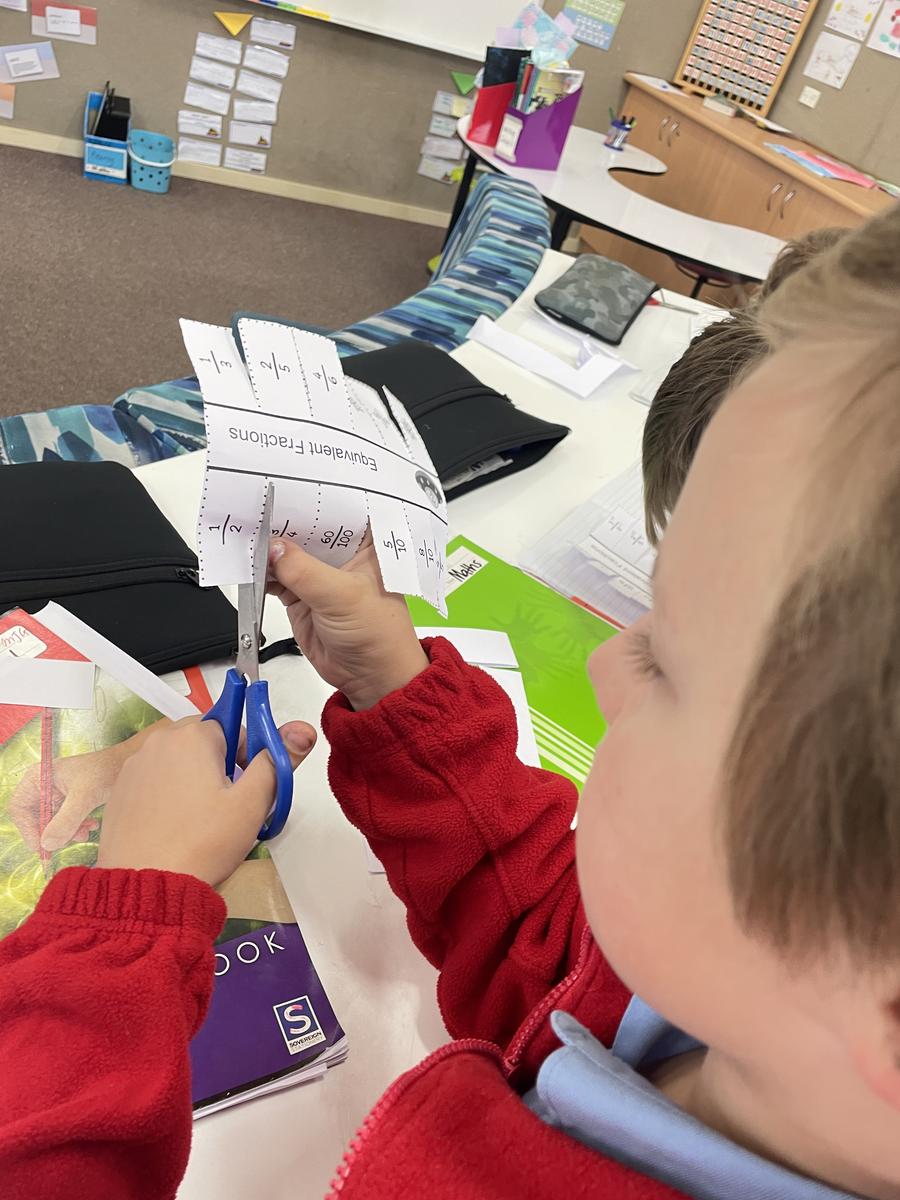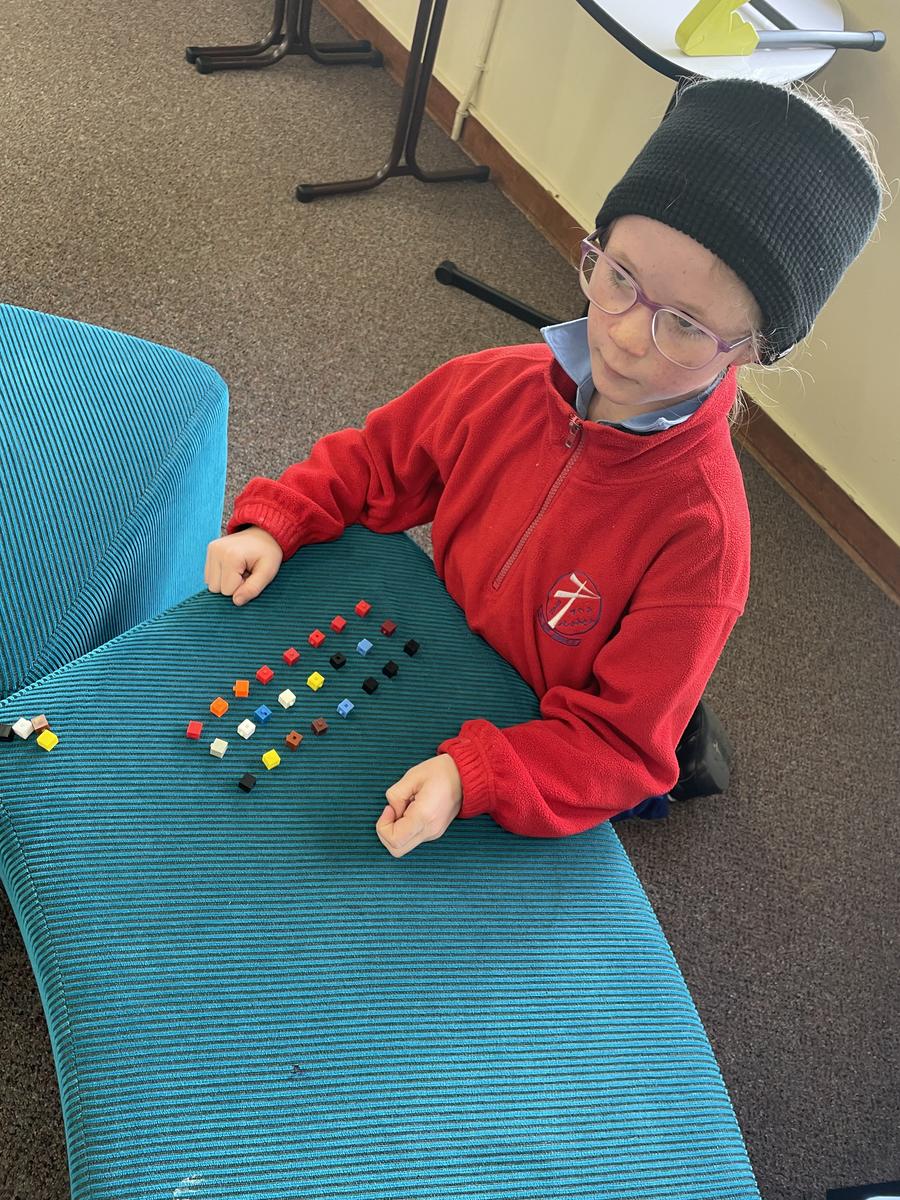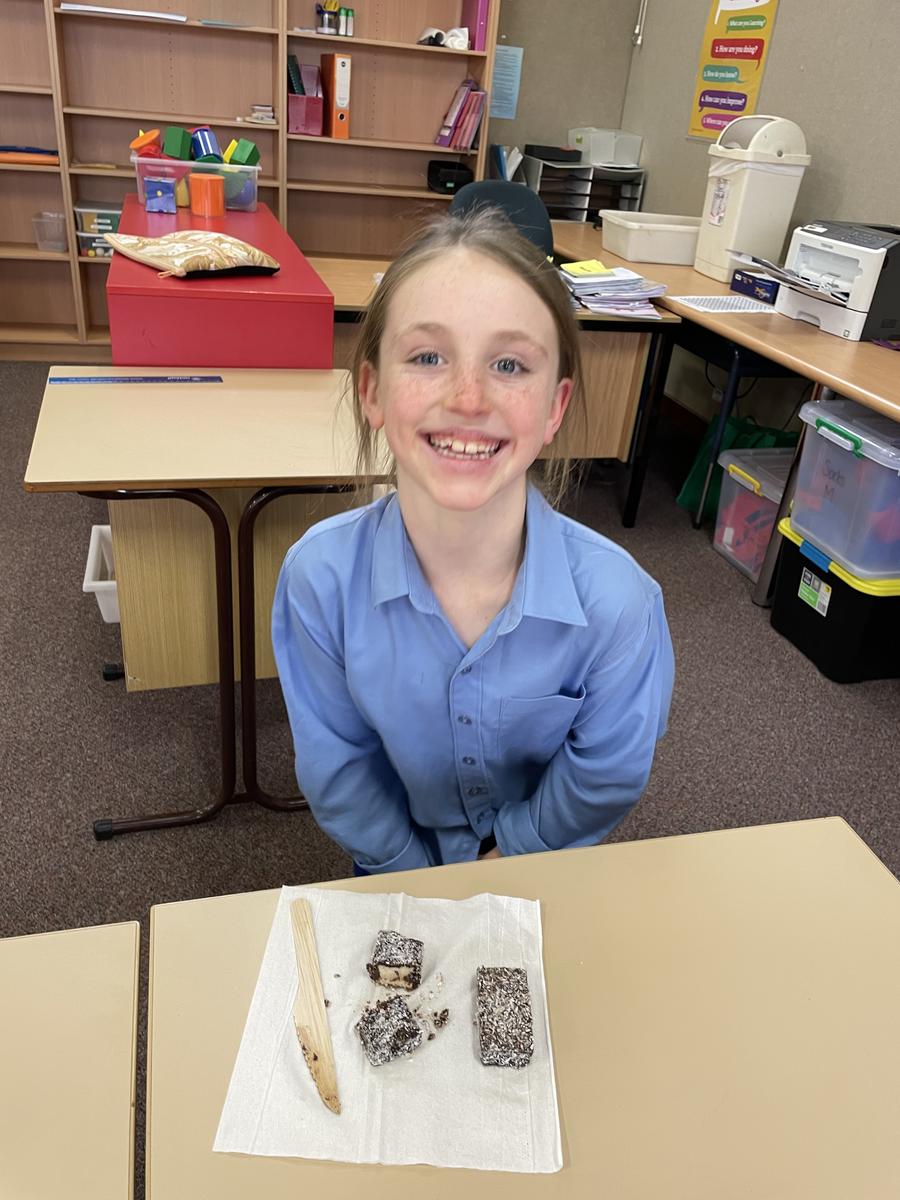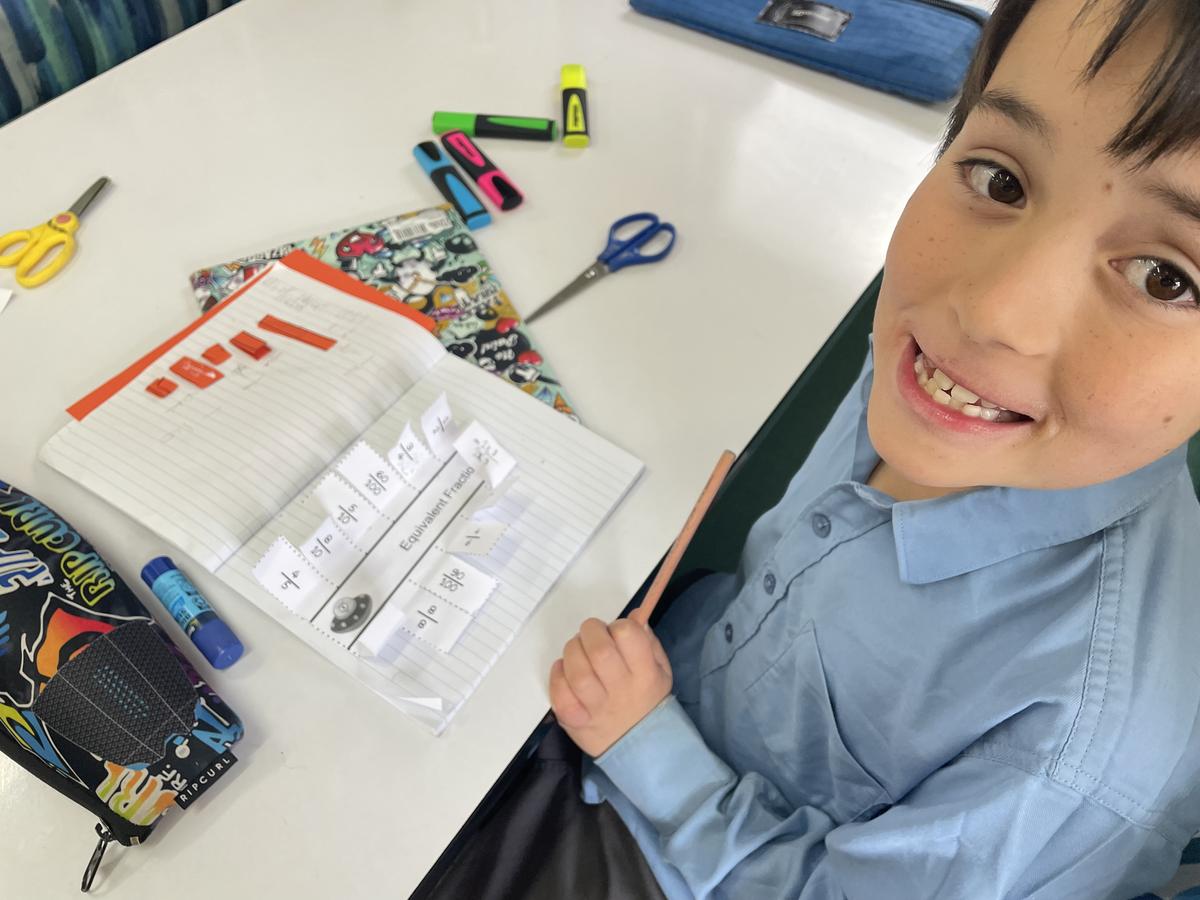Mathematics Improvement Project

Fractions
Stage 2 are currently learning and exploring fractions. This involves modeling, comparing and representing fractions.
What is a fraction?A fraction represents part of a whole. When something is broken up into a number of parts, the fraction shows how many of those parts you have.
Some of the misconceptions your child may have are:
Misconception 1: Fractions are equivalent only when they look identical or have the same number of selected parts. Students do not understand that equivalent fractions occupy the same position on the number line.
Misconception 2: The larger the number of parts (denominator) the larger the fraction. Students are often unaware that the larger the denominator, the smaller the fraction. They are not seeing the fraction as a number but as a collection of numbers. This misconception can arise as a consequence of an undue emphasis on discrete models (eg, 3 out of 20 smarties) where the size of the actual object (a single smarty in this case) does not change if the size of the collection is changed but it’s relationship to the whole does (eg, 3 out of 50 smarties). That is, discrete models can lead to a confusion between wholes and parts which may mask the relationship between them. This is not to say they should not be used, but that they should be used in conjunction with continuous models where this generalisation is more readily observed.


